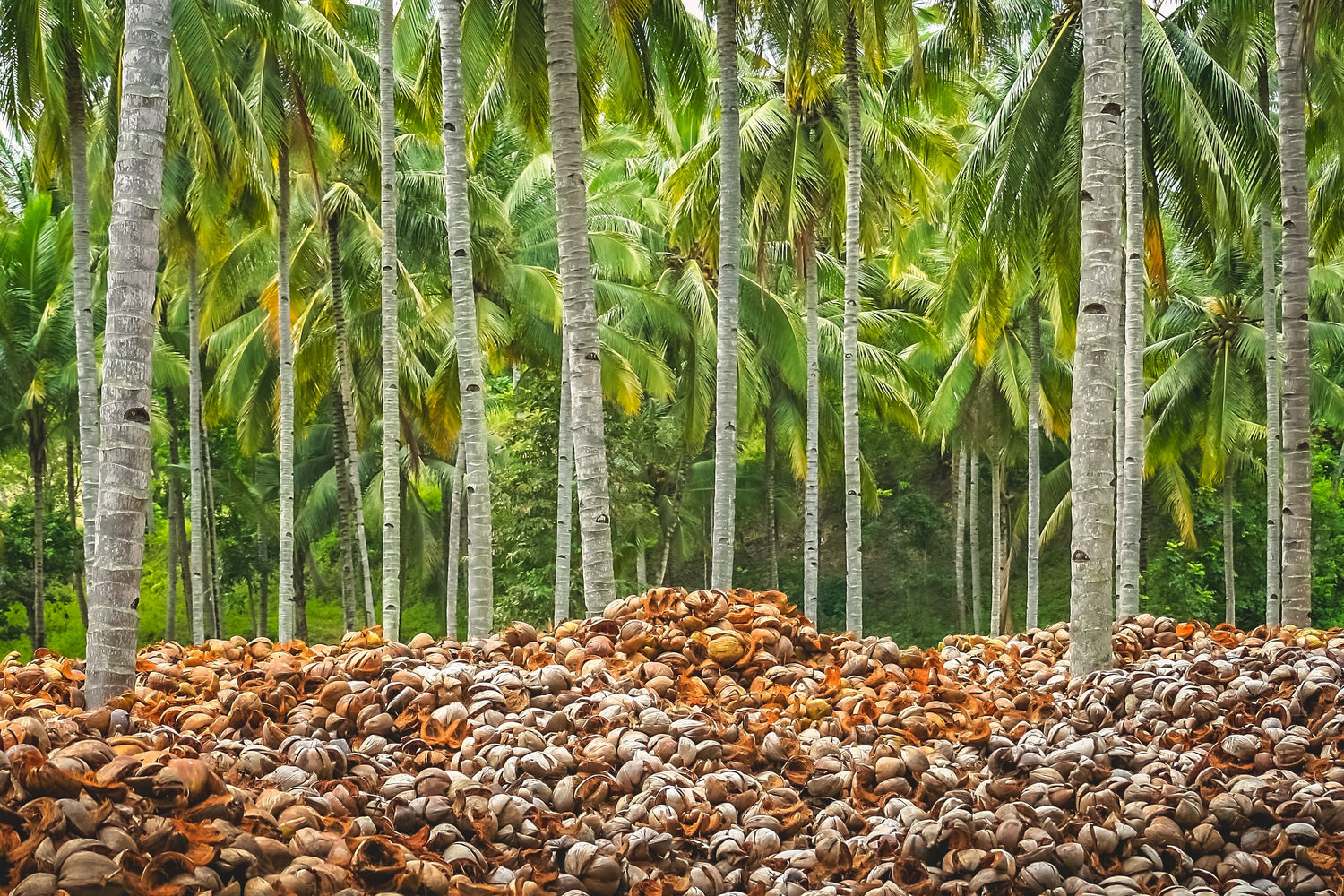To conserve soil moisture in coconut plantations, mulching with organic materials is highly effective. The best time to mulch is just before the end of the monsoon season and before the topsoil dries out. For mulching, coconut leaves can be cut into two or three pieces. To cover a 1.8-meter radius around the coconut basin, you'll need 10 to 15 fallen coconut leaves, spread in two to three layers.
Another ideal method is to mulch with composted coir pith, applying it to a thickness of 10 cm (about 50 kg per palm) around the coconut basin. Coir pith can retain moisture up to five times its weight. Its fibrous and loose nature significantly improves the soil's physical properties and water-holding capacity. This mulch can last for about 1 to 2 years.
Coconut husks are also excellent for mulching around the base of the palm, retaining moisture up to 3 to 5 times their weight. For one coconut basin, approximately 250 to 300 husks are needed. Mulching is usually done up to a radius of 2 meters, leaving about 30 cm near the palm. Two layers of husk are buried in the basin with the concave side facing upwards to absorb moisture. On top of this, another layer of husks is placed with the convex side facing upwards to reduce evaporation. This mulch can last for about 5 to 7 years.

Coir Pith Mulching
Burying husks in trenches between rows of palms is another effective method for moisture conservation in coconut gardens. This should be done at the beginning of the monsoon season. Dig linear trenches 1.2 meters wide and 0.6 meters deep between the rows of palms, placing the husks with their concave sides facing upwards. Each layer of husks should be covered with soil.
Catch pits, filled with coconut husks, can also be constructed on slopes to conserve soil and water. While there are no standard dimensions, a common size for catch pits is 1.5 meters in length, 0.5 meters in width, and 0.5 meters in depth. A bund should be created on the downslope side using the excavated soil, and pineapple suckers can be planted on it. The pit itself should be filled with coconut husks to enhance its moisture-retention capabilities.
Contour Trench Filled with Coconut Husk
This measure is particularly useful for areas with a high land slope. Trenches measuring 50 cm in width and depth, and of a convenient length, should be dug between two rows of coconut palms and filled with coconut husks. The husks should be layered with the bottom layers facing upwards and the top layer facing downwards.
Additionally, a bund of 20 cm in height and more than 50 cm in width should be constructed downstream using the excavated soil. Plant two layers of pineapple plants on the bund, spaced 20 cm apart. These pineapple plants help stabilize the bund and provide additional income to the farmer.
The runoff water from the upper slope will collect in these trenches, and soil particles will also settle in the trench with the water. The coconut husks retain moisture, making it available to the plants during the dry summer months.

Half-moon Bund around Coconut basin Reinforced with Pineapple
This measure is to be taken up where there is mild slope (15-20%). Here a flat basin with a slight inward slope towards upstream is made by excavating soil from the upstream side and filling the excavated soil at the downstream side. After making the basin, a bund of 30 cm height and >50 cm width is made at the downstream side of the coconut using the excavated soil. Two layers of pineapple plants could be planted with a spacing of 20 cm row to row and 20 cm plant to plant on the bund. The bund prevents runoff and water gets collected within the basin and percolates down. Pineapple would help to protect the bund and stabilize the same in addition to giving fruit yield.
